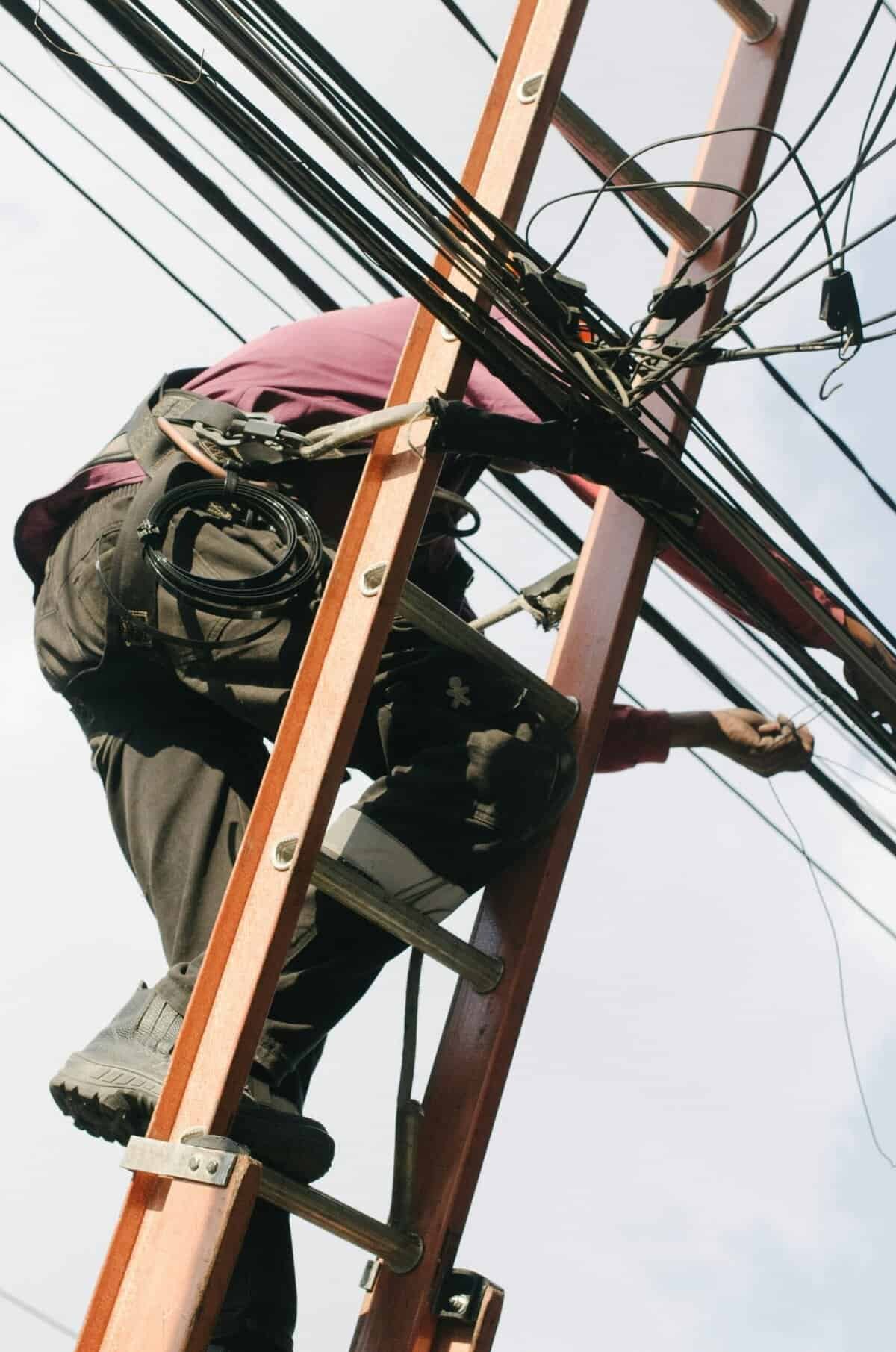Have you ever wondered if the electrical systems near your well could pose a danger? It’s an important question to consider, especially when you rely on your well for essential water needs. Understanding the potential risks and how to mitigate them can help ensure the safety and functionality of your water source. So, let’s explore the concerns and safety practices associated with electrical systems near wells.

Understanding the Basics of Wells and Electrical Systems
A well is not just a hole in the ground where water magically appears; it’s a complex system that often involves electrical components, particularly if the water is pumped to the surface. Knowing how electrical systems work near wells can help you better manage and maintain them.
What Are Wells?
Wells are deep holes drilled into the earth to access water stored in underground aquifers. They can vary in depth, depending on the location and the quantity of water needed. Domestic wells often use pumps to bring water to the surface, requiring a source of power, which is often electrical.
Why Do Wells Need Electrical Systems?
Electrical systems are integral to most modern wells because they power the pump, which is essential for drawing water out of the ground. Without this system, you would have to rely on manual methods to access water, which can be impractical and inefficient for daily use.
Common Electrical Components in Well Systems
Typical electrical components in well systems include the pump and motor, pressure switches, control boxes, wiring, and sometimes a backup generator. Each of these components plays a vital role in ensuring the smooth operation of the well.
Table: Common Electrical Components
| Component | Function |
|---|---|
| Pump and Motor | Draws water from the aquifer to the surface. |
| Pressure Switch | Regulates the pressure and controls the pump operation. |
| Control Box | Manages and protects the electrical equipment. |
| Wiring | Connects the electrical components and power source. |
| Backup Generator | Provides power during electrical outages. |
Potential Risks of Electrical Systems Near Wells
While essential, electrical systems near wells can pose risks if not properly maintained or installed. Awareness of these risks can prevent injuries and extend the life of your well system.
Electrocution and Electrical Shock
One of the most significant risks is electrocution or electrical shock. Water and electricity are a dangerous combination, and any faulty wiring or improper insulation can lead to serious accidents.
Risk of Fires
Electrical components can overheat, and if there is any flammable material nearby, it could catch fire. Ensuring proper ventilation and keeping the area clear can mitigate this risk.
Ground Faults
These occur when electrical current travels along an unintended path to the ground, which can lead to equipment failure or electrical fires. Ground faults are particularly concerning in moist environments like those around a well.
Corrosion of Components
Moisture can cause electrical components to corrode, leading to poor connections and potentially hazardous situations. Regular inspections can help identify and address corrosion before it becomes a problem.

Safety Practices for Managing Electrical Systems Near Wells
Now that you’re aware of the potential risks, the next step is to implement safety practices to minimize these dangers. Here are some crucial safety measures to keep in mind.
Hire a Professional Electrician
Always hire a qualified electrician to install and maintain your well’s electrical system. They have the expertise to ensure that installations meet safety codes and regulations.
Regular Inspections
Conducting regular inspections of your well’s electrical system can help identify potential issues before they become dangerous. An annual inspection by a professional is recommended for safety and efficiency.
Install Ground Fault Circuit Interrupters (GFCIs)
GFCIs are essential in any area where water and electricity are present together. They help prevent electrical shock by shutting off the circuit when a fault is detected.
Use Weatherproof and Durable Materials
Ensure that all electrical components near your well are designed to withstand outdoor conditions. Weatherproof and durable materials can significantly reduce the risk of accidents.
Documentation for Safety Inspections
Keeping documentation of safety inspections and maintenance can be incredibly valuable. It not only helps ensure your system is safe but also can be useful if ever there are disputes with insurance claims or regulatory bodies.
What Documentation Should I Keep?
- Inspection Reports: Keep a record of each inspection, noting the date, the professional who performed it, and any recommendations made.
- Maintenance Logs: Document all maintenance tasks, including the date, type of maintenance, and who performed the work.
- Installation Records: Retain records from the initial installation for reference on the components and systems in place.
- Repair and Replacement History: Like maintenance logs, these should include information about what was fixed or replaced, when, and by whom.
Why Is Documentation Important?
Proper documentation can provide a historical record that helps diagnose issues, ensure safe practices are consistently followed, and provide evidence of compliance with safety regulations. It can also serve as proof of responsibility in the event of an incident.

Steps for a Safe Electrical System Near Your Well
If you’re looking to do more than just the basics, here are several steps that can make a substantial difference in the safety of your well’s electrical system.
Step 1: Conduct a Risk Assessment
Begin by assessing the current state of your well’s electrical system. Identify potential hazards and areas for improvement. Use this information to create a plan for upgrades or changes needed to ensure safety.
Step 2: Establish Routine Maintenance
Create a routine maintenance schedule that includes checks for all electrical components. Regular maintenance can prevent small issues from developing into big problems.
Step 3: Implement Safety Training
If you’re managing a well on a property that’s accessible to family or employees, ensure they know the basics of well safety, including the risks of electrical components.
Step 4: Upgrade Outdated Systems
Consider upgrading any outdated electrical equipment with modern, safer alternatives. Newer technology often comes with enhanced safety features and improved efficiency.
Step 5: Secure Your Well Area
Keep the area around your well clear of debris, vegetation, or anything else that might damage the electrical components. Maintaining a clean site is part of a good safety practice.
Understanding Local Regulations and Safety Codes
Regulations and safety codes can vary by location, but they are crucial for ensuring well safety. Familiarizing yourself with these can help you stay compliant and protect everyone who may access the well.
Importance of Compliance
Compliance with local regulations and safety codes ensures that your well does not become a safety hazard for you or others. Non-compliance can lead to fines, legal issues, and increased risks of accidents.
How to Stay Informed
- Consult Local Authorities: Reach out to your local water agency or electrical regulator for information on specific regulations in your area.
- Hire Certified Professionals: They are usually well-versed in the local codes and can help ensure your system is compliant.
- Stay Updated: Regulations can change, so it’s beneficial to periodically check for updates that may affect your well’s system.

Conclusion
When dealing with electrical systems near wells, understanding the potential risks and implementing proper safety measures is crucial. Ensuring professional installation, routine inspections, and appropriate documentation can significantly reduce hazards. Compliant, well-maintained electrical systems not only protect you and your family but ensure that your well remains a reliable water source for years to come. Take the necessary steps today to secure your well’s electrical system and enjoy peace of mind knowing you are safeguarded against potential dangers.
